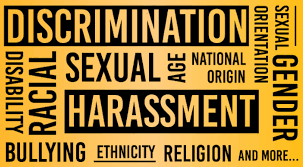Workplace discrimination and harassment are serious issues that can have a significant impact on individuals, organizations, and society as a whole. Unfortunately, despite efforts to promote diversity, equity, and inclusion in the workplace, discrimination and harassment continue to be major concerns in many industries and professions. In this blog, we will explore the nature and consequences of workplace discrimination and harassment, as well as some strategies for addressing and preventing these issues.
The Nature of Workplace Discrimination and Harassment
Workplace discrimination can take many forms, including unequal treatment based on race, gender, age, disability, religion, sexual orientation, and other factors. Discrimination can occur in hiring, promotion, pay, training, and other employment decisions, as well as in the everyday interactions between colleagues and supervisors. Discrimination can also manifest in more subtle ways, such as microaggressions and implicit biases, which can have a cumulative effect on the wellbeing and career prospects of individuals.
Workplace harassment, on the other hand, is a form of discrimination that involves unwelcome conduct based on protected characteristics, such as sexual harassment, racial harassment, and bullying. Harassment can take many forms, including verbal, physical, and psychological abuse, and can create a hostile work environment that undermines the productivity, morale, and wellbeing of employees.
The Consequences of Workplace Discrimination and Harassment
Workplace discrimination and harassment can have serious consequences for individuals, organizations, and society as a whole. Discrimination and harassment can lead to reduced job satisfaction, lower performance, increased absenteeism, and higher turnover, which can undermine the competitiveness and sustainability of organizations. Discrimination and harassment can also have a negative impact on the mental and physical health of individuals, leading to stress, anxiety, depression, and other problems.
Addressing and Preventing Workplace Discrimination and Harassment
To address and prevent workplace discrimination and harassment, organizations can take several steps, including:
Developing and implementing clear policies and procedures for preventing and addressing discrimination and harassment, including reporting mechanisms and investigations.
Providing training and education for employees, managers, and leaders on diversity, equity, and inclusion, as well as on the nature and impact of discrimination and harassment.
Promoting a culture of respect, tolerance, and civility, where all employees are valued and their contributions are recognized.
Encouraging and supporting employee resource groups, mentoring programs, and other initiatives that promote diversity and inclusion in the workplace.
Holding individuals and organizations accountable for discrimination and harassment, including taking appropriate disciplinary action when necessary.
In conclusion, workplace discrimination and harassment are serious issues that require the attention and action of individuals, organizations, and society as a whole. By understanding the nature and consequences of discrimination and harassment, and by taking proactive steps to prevent and address these issues, we can create more equitable, inclusive, and productive workplaces for all.




